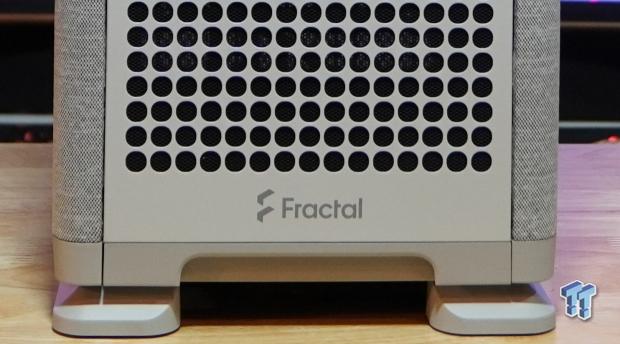
The Bottom Line
Pros
- + Aesthetically pleasing
- + Compact yet spacious 20L design
- + Dual purpose fabric
Cons
- - A high entrance fee of $149.99
- - The rear panel is not cohesive with the rest of the design
Should you buy it?
AvoidConsiderShortlistBuyIntroduction, Specifications, and Pricing
Fractal Design has launched another mITX chassis, the Fractal Mood is what we will be looking at today. Looking more like living room furniture, the Fractal Mood aims to blend in rather than be the focal point in any given space. At first glance, one would think that Fractal and IKEA have teamed up, but no, it's all Fractal behind this one, so I applaud them for trying something new in a very active market.
Fractal's Mood SFF computer case is priced at $149.99; this entry point seems a tad high for what is offered. Why don't we see what the Mood from Fractal is all about?

Packaging
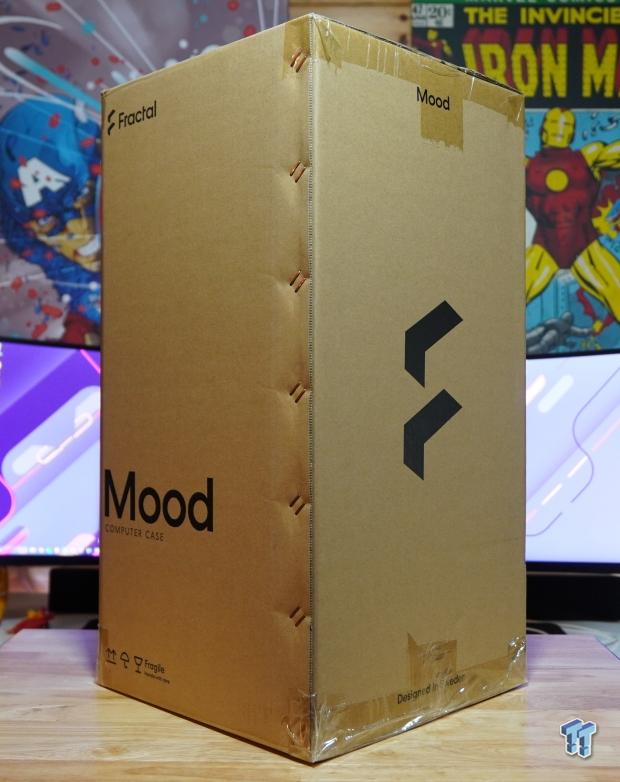
To kick things off, we start with the packaging, which Fractal does well. It's a simplistic brown cardboard box with the fractal logo on two sides and the Mood product name on the other.
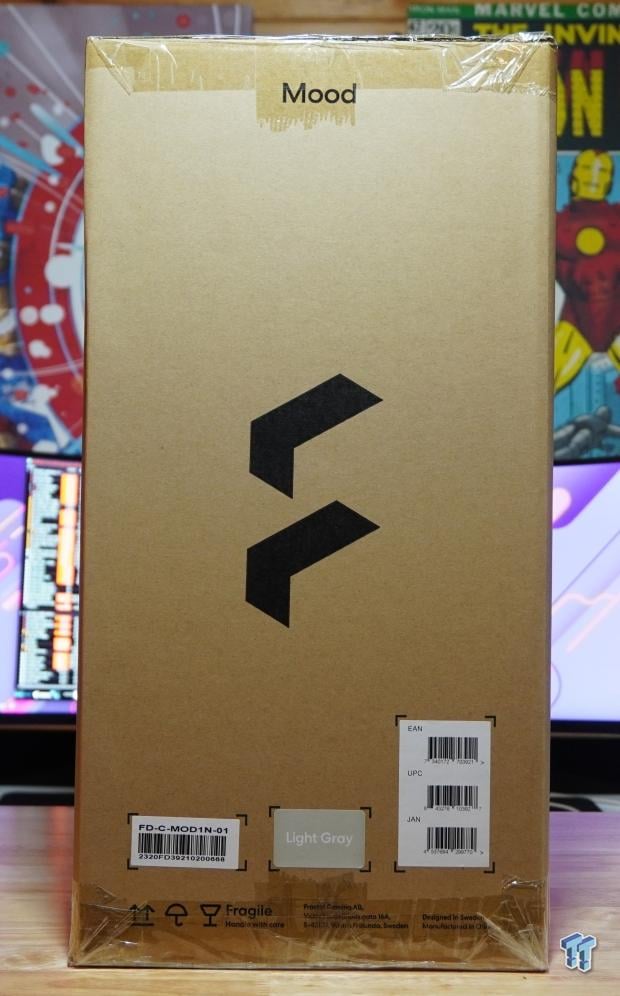
This packaging side shows the model number, color, and UPCs.
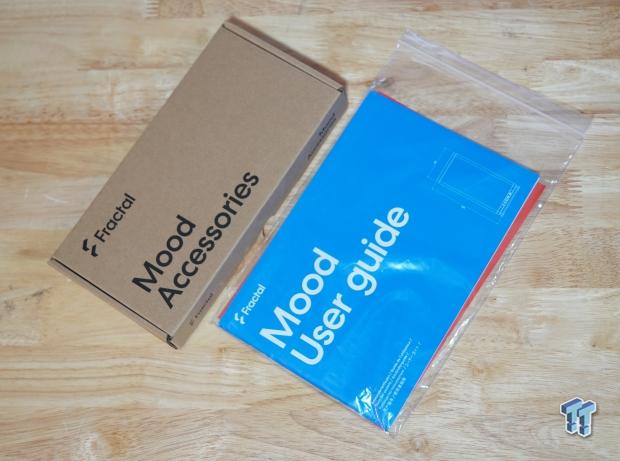
Once we open the box, we are greeted with the Mood Accessories and Mood User guide. The accessories include two different HDD/SSD brackets and a baggie with zip ties, cable ties, and screws. As always from Fractal, the user guide is thorough and thought through.
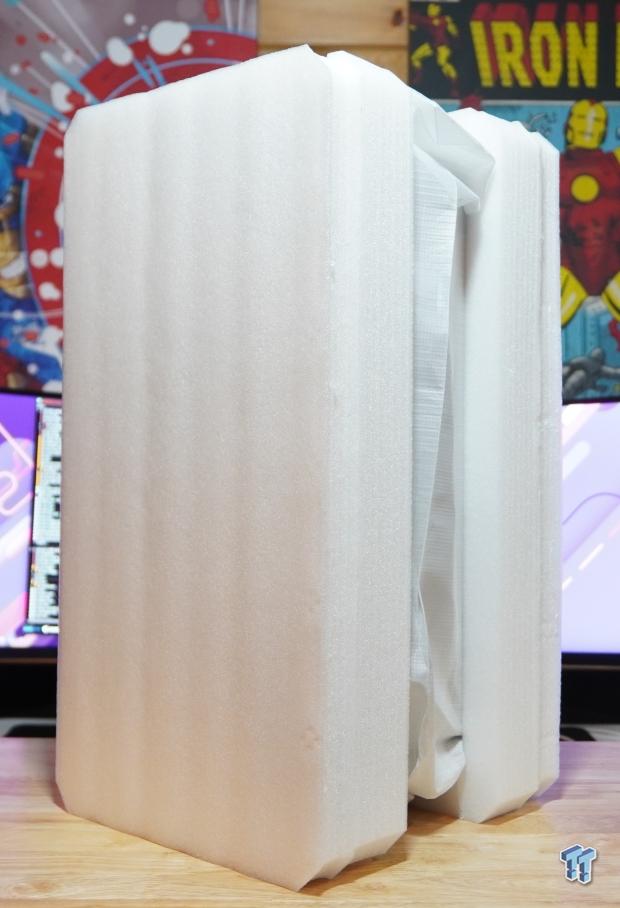
Now moving on to the main event, the Mood is packaged in white high-density foam and a foam bag. It's a very good Fractal.
Outside the Fractal Mood mITX Case
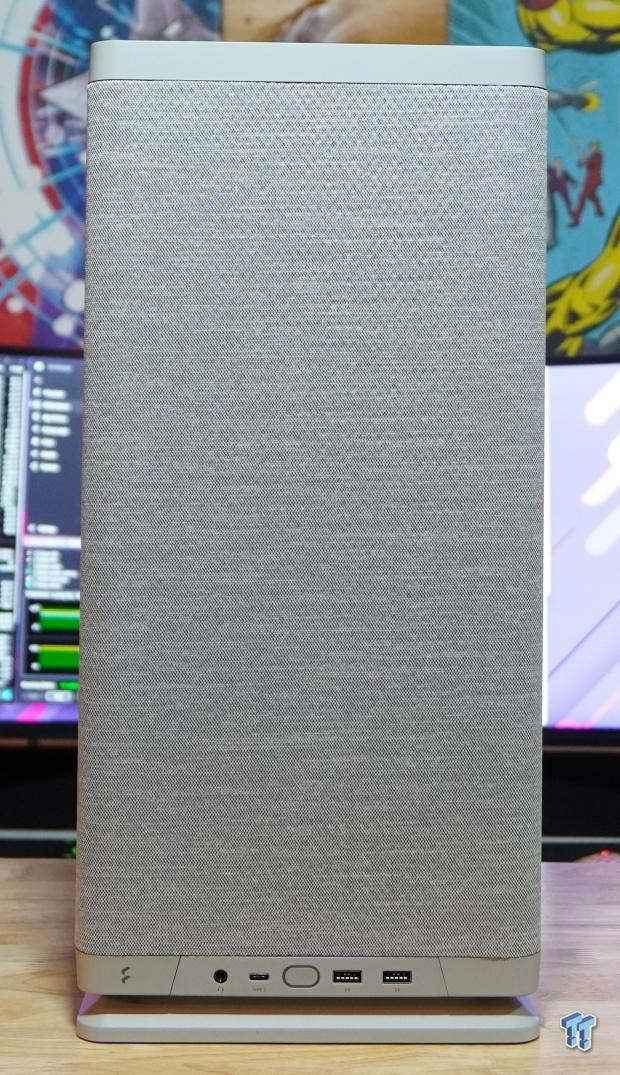
Now that all the packaging is removed from the Mood, we can see the cloth wrapped around three of the four sides. The front I/O, located on the front bottom lip, is set up with a combo 3.5mm Audio/Microphone jack, a single USB 3.2 Gen 2x2 rated at 20 Gbps, an oval-shaped power button, and lastly, two USB 3.0 Type-A rated for 5 Gbps.
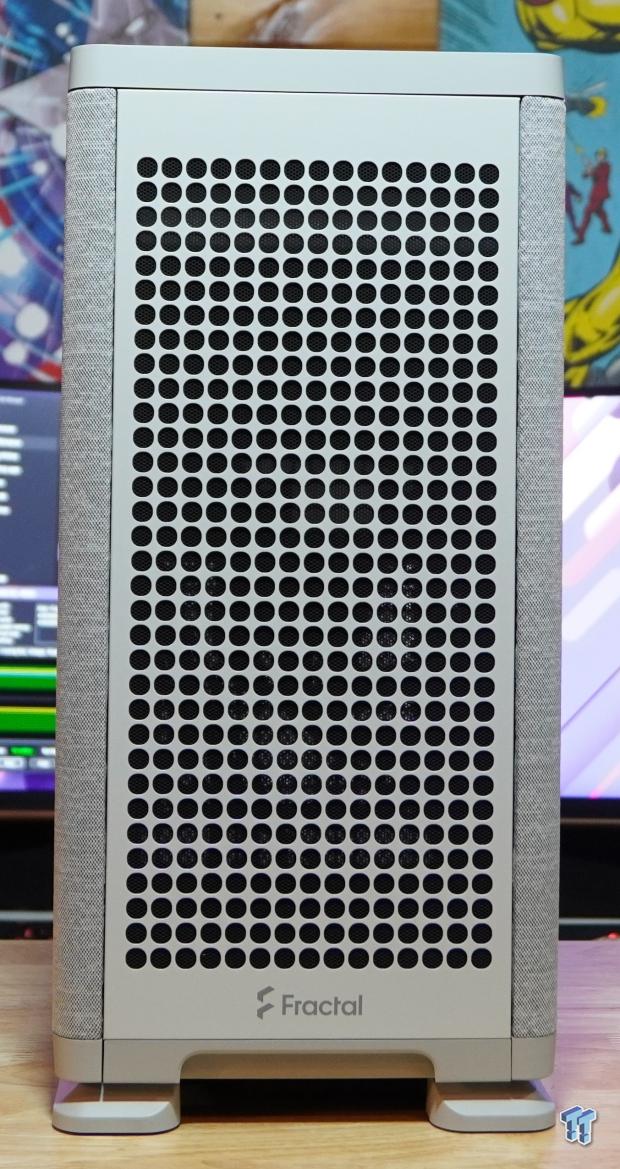
The rear of the Fractal Mood mITX case has a removable panel with a large circular mesh. This panel is easily removed by lifting it from the bottom.
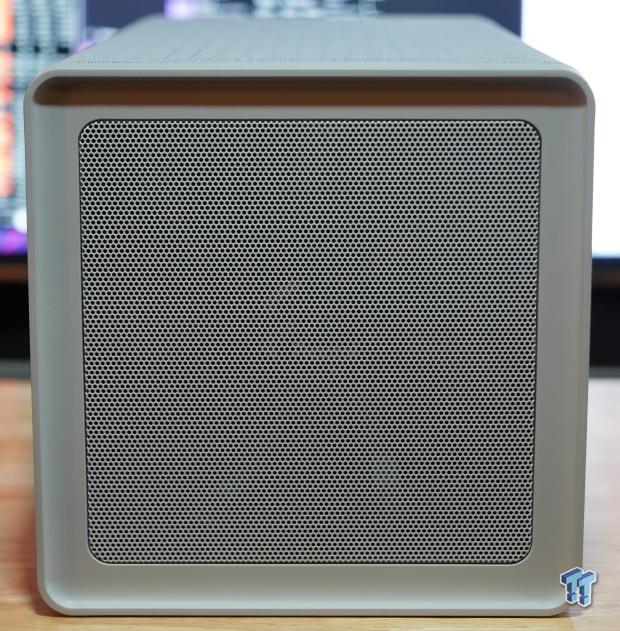
The top of the Mood features a metal mesh panel, allowing for hot air to be exhausted via the top-included fan, more later.
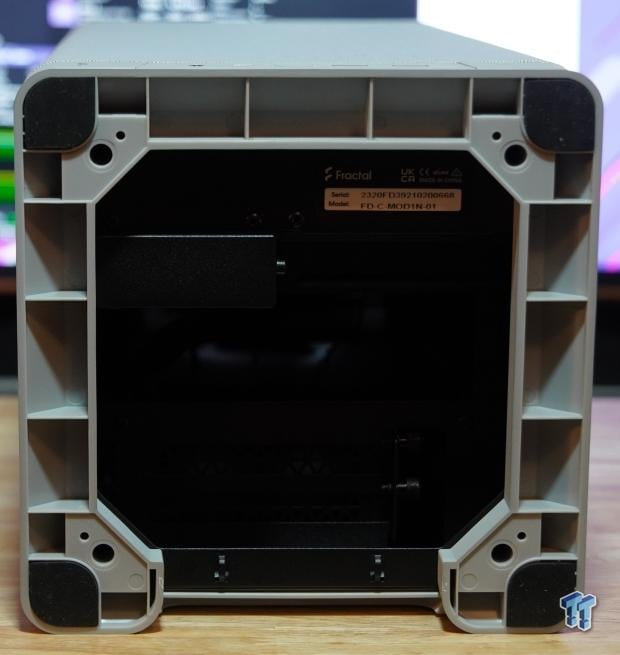
The underside of the Mood is where all the motherboard I/O is run. The power cable is put at a 90-degree angle, not facing the rear, which would have made sense. Four rubber feet in each corner keep the Mood firmly planted where it needs to be.
Inside the Fractal Mood mITX Case
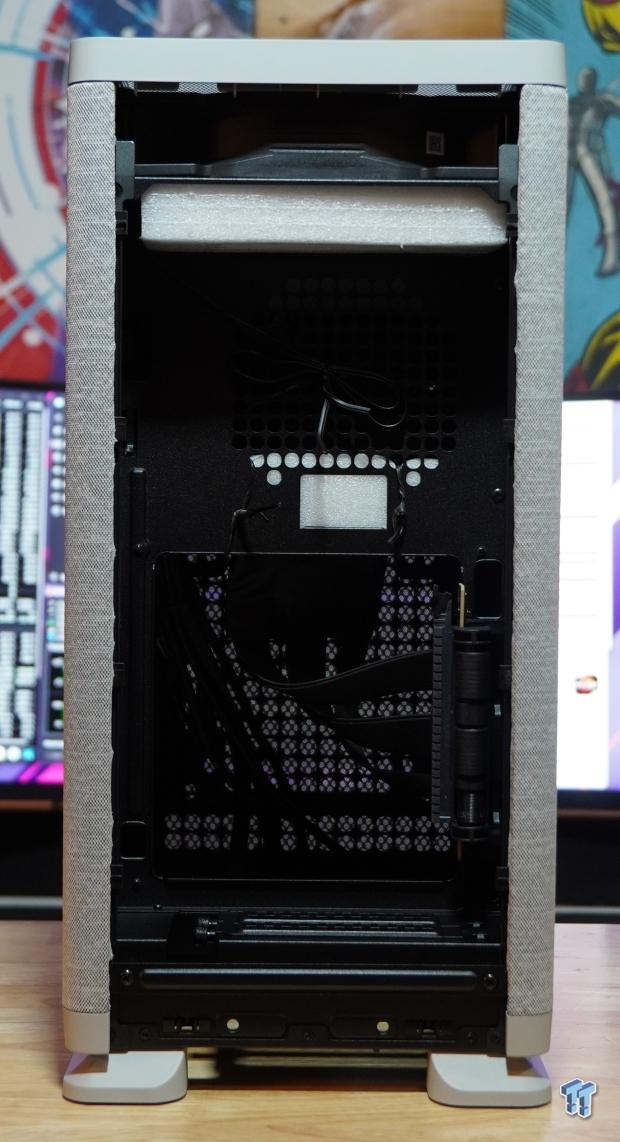
Removing the rear panel shows some internals of the Mood. The included PCIe 4.0 riser cable is pre-installed on this side, making this side the GPU chamber.
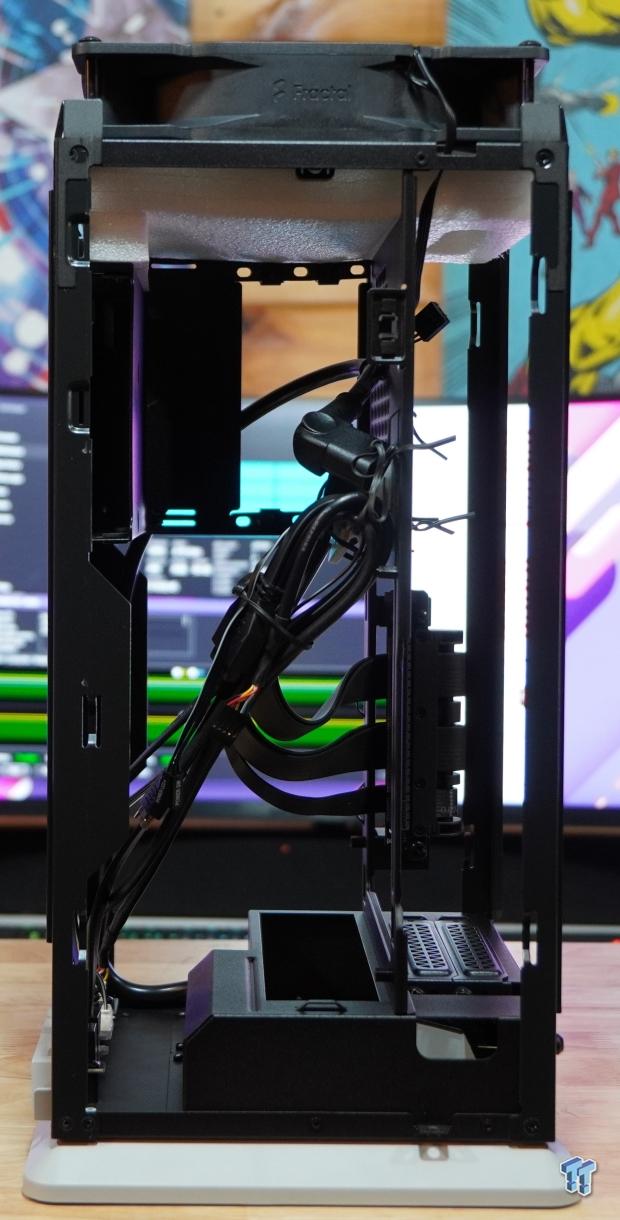
Now, with the external shell removed, the bones of the Mood are exposed. Nestled on top is the 180mm X2 GP-18 PWM fan running at 1200 RPM, making for a chimney-style cooling. You can also see the motherboard chamber, with the two-slot GPU chamber directly behind. Fortunately, a 2.5-slot GPU can be installed, but those 3+ slot GPUs must be applied elsewhere. The total capacity for the Mood is 20L.
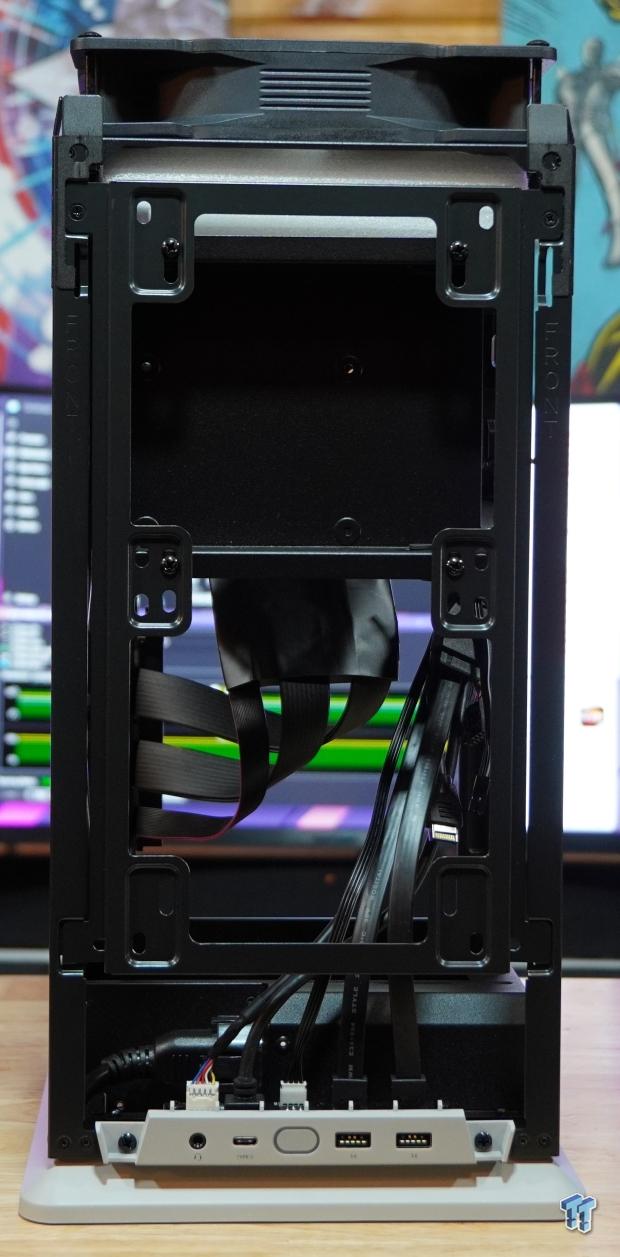
This side of the Mood allows for two 140/120mm fans or up to 280/240mm radiators to be installed via the removable bracket, which is very handy. Mounted to the fan/radiator bracket is a 3.5" or 2.5" HDD or SSD mount. The cables for the front I/O also run up here, which can be problematic and need to be more appropriately placed.
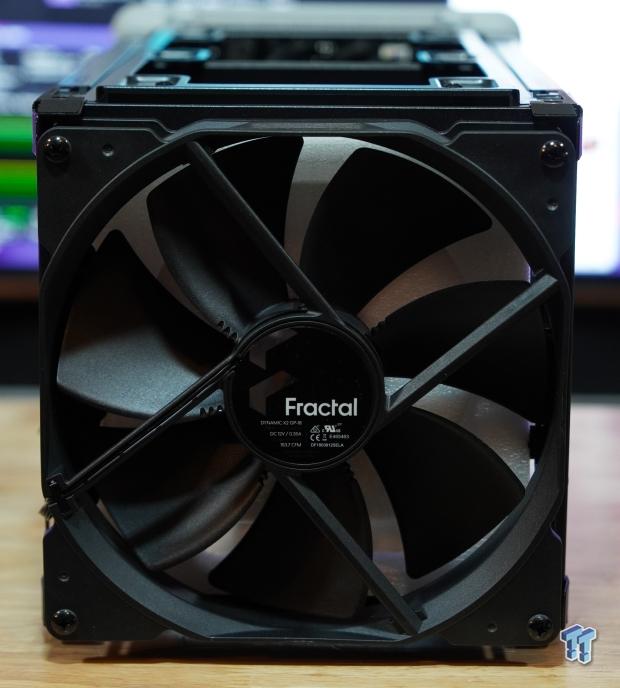
The 180mm X2 GP-18 PWM fan running at 1200 RPM is the footprint Fractal was trying to achieve here. This fan is also featured in the Torrent series.
Test System, Installation, and Finished Product
- Motherboard: B650I AORUS Ultra(AMD B650) - Buy from Amazon
- CPU: AMD Ryzen 9 7900 - Buy from Amazon
- Cooler: Cooler Master 120mm Master Liquid Custom 38mm Thick AIO
- Thermal Interface Material: Thermal Hero NEO 2g - Buy from Amazon
- Memory: Patriot Viper Venom RGB DDR5-5600 32GB - Buy from Amazon
- Storage: Kingston Fury Renegade 1TB Gen4 PCIe x4 NVMe M.2 SSD - Buy from Amazon
- Case: Fractal Design Mood mITX case - Buy from Amazon
- Power Supply: Cooler Master V850 Gold SFX ATX 3.0 PSU - Buy from Amazon
- OS: Microsoft Windows 11 Pro 64-bit Build 22621 - Buy from Amazon
- Software: AIDA64 Engineer 6.8.6300, HWiNFO64 v7.68-5300, TechPowerUp GPU-Z v2.57.0,and CPU-Z 2.09.0.x64
Final Thoughts
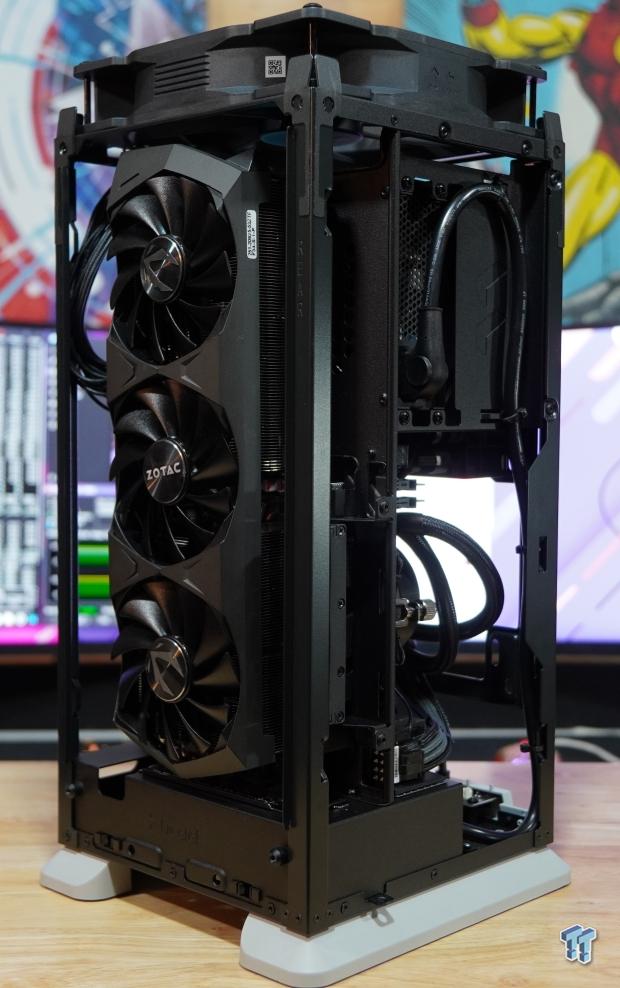
The build inside the Fractal Mood went well. The only real hiccup was with the GPU I chose to use. The Zotac RTX 3090 Trinity, a 2.5-slot design, was a tight fit while sliding on the outside fabric shell.
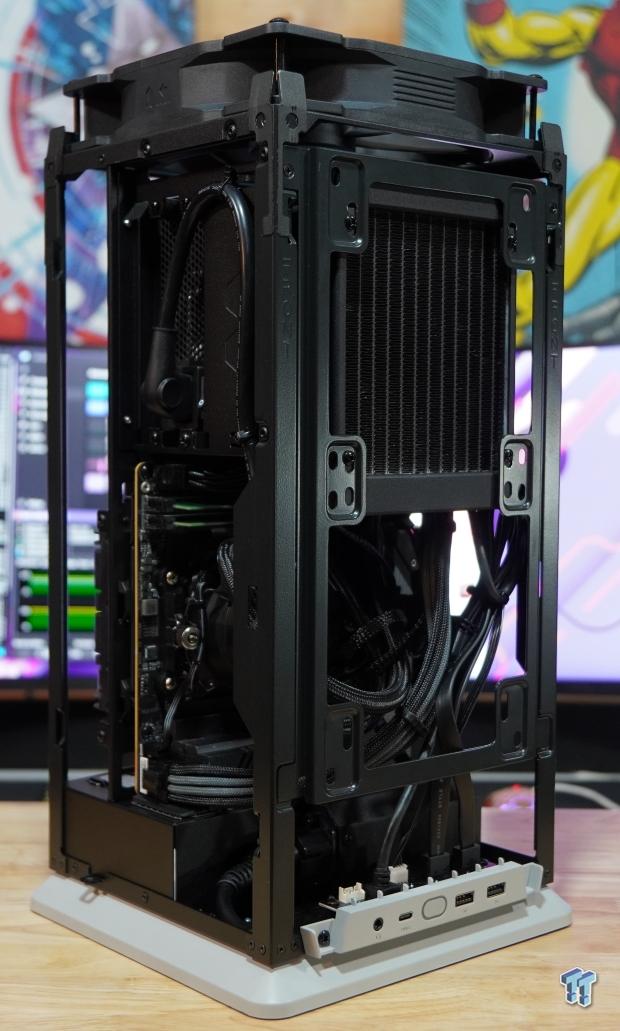
Taking the components from the Cooler Master NCORE 100 Max build, 120mm AIO, and 850w ATX 3.0 PSU gives a more apples-to-apples comparison. The only difference here is where the 120mm AIO was mounted. In the Mood, it was mounted as an intake, the Ncore 100 MAX, as exhaust via the chimney effect.
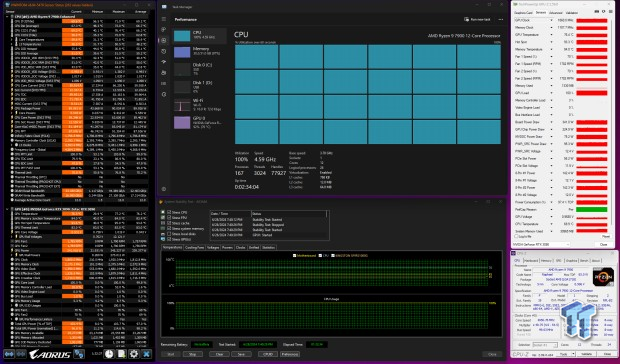
Testing the Fractal Mood Once all the testing hardware was installed, an AMD Ryzen 9 7900, a 65-watt CPU, was set to .993v core voltage, mainly to keep temperatures in check. The B650I AORUS Ultra mITX motherboard is the motherboard of choice here, and cooling the Ryzen 9 7900 was the custom Cooler Master Master Liquid 120mm 38mm thick AIO CPU cooler. 32GB of DDR5-4800 RGB from SKHYNIX and the Kingston Fury Renegade 1TB PCIe 4.0 M.2 NVME SSD were also installed.
The AMD Ryzen 9 7900 did boost to over 4.55ghz most of the time, pulling about 90 watts, which, to my surprise, kept the Ryzen 9 7900 at an average temperature of 69.2C. With its triple fan array, the GPU, Zotac RTX 3090, drew about 339 watts, with an average temperature of 76.2C, which is okay with the magnetic dust filter in place. It's awesome to see this level of cooling being possible in an mITX format.
All testing was completed using Aida64 Engineer's System Stability Test version v7.30.6900 for over 1.5 hours; the ambient room temperature was 19C. Other monitoring software used was HWiNFO64 v8.04-5470, TechPowerUp GPU-Z v2.59.0, and CPU-Z 2.09.0.x64.
So, is the Mood from Fractal Design a good mITX case? Yes, for the most part, it is. The Mood has this aesthetic about it that feels very IKEA-like, which is not a bad thing at all. The Mood would fit as an HTPC or in a minimalistic office. The only things that I would be aware of are the front I/O cabling is a little in the way of building, only supporting two slot GPUs (even though I fit in a 2.5 slot GPU), and the pricing seems a bit high for how much material you are receiving considering there is no tempered glass.
Overall, the Mood was fun to build despite its few limitations. For SFF enthusiasts, it might not be their cup of tea, but for everyone else looking for an elegant design without having to use very specific hardware, it seems to set the "mood."

